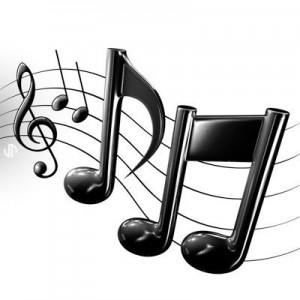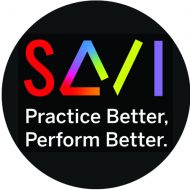Reflections on the power and pervasiveness of song, on the occasion of a new class
 What is it about songs? If you’re a singing actor, you’ll spend your lifetime performing them, interpreting them, living inside them, so surely you must be curious: just what, exactly, is the deal?
What is it about songs? If you’re a singing actor, you’ll spend your lifetime performing them, interpreting them, living inside them, so surely you must be curious: just what, exactly, is the deal?
Songs are ubiquitous, that’s for sure. Everywhere you look, people are plugged into their headsets, going about their daily business with a secret soundtrack. But songs are public, too, and public songs permeate our culture: they’re playing when we wake up, worship, make love, get married, put our children to sleep, bury our dead. In stores, restaurants, cars: there’s no escaping them.
As someone who writes songs and teaches others to perform them, I am fascinated by their power and influence, and constantly curious about what makes them tick.
That’s why, this fall, I am preparing to teach a new course called “Enchantment Studio.” This is a multi-disciplinary studio experience designed to explore the expressive nature of song. The enrollment in the class reflects a variety of disciplines: a voice major, but only one; a handful of animators; a couple film makers; a graphic designer; a music business student; and a theater-maker. It’s a great diverse group, and there’s still room for a few more.
Each week, I propose to undertake a collaborative studio project with these students, introducing a concept, discussing it briefly (with examples), then proposing an activity or process based on that concept. Some will be done quickly, as “sketches,” others more fully developed. Every student will work in image, word, sound and movement.I envision processes where the student will be assigned to respond in one medium to a “provocation” in another media.
It’s a crazy, art-school sort of idea for a class, but it’s got me genuinely excited. I think of the work we will be doing as research that will feed back into my own understanding and my personal artistic process regarding the creation and performance of song.
For this reason, I’m going to be writing a series of reflective posts, which I’ll publish here, and solicit comments on those posts. I’m not quite sure what form the contribution will take, but I anticipate that there will be some exciting discoveries shared during the next few months.
In this introductory post, let’s examine the title I invented for the class: why “enchantment?” The centerpiece of this long word is “chant,” which means “sing” in French and a particular sort of song or intoned speech in English; trace it back etymologically and you reach the Latin verb “cantare,” to sing, and the related noun “cantus,” meaning song. But an “enchantment” is not just a song; it’s a kind of spell that gets cast, using song (and movement, in some cases) to beguile the senses, summon a certain spirit, and make something happen. Spells aren’t chanted randomly, but have a function – they are designed to produce results.
“Rain, rain, go away…”
“Rock-a-bye, baby, on the treetop…”
“My country, ’tis of thee,
Sweet land of liberty,
Of thee I sing.”“You say you want a revolution?
Well, you know, we all want to change the world.”
Songs are compact, both decorative and functional. They have a kind of singularity: that is, the mood, the sound and the ideas of a song all can inhere as a single expressive unit, and the title of the song is a short verbal phrase that not only refers to but evokes the experience of the song: “When Sunny Gets Blue,” “Satisfaction,” “After the Ball.” This singularity is often achieved through devices like rhyme, repetition (including phrases, refrains and stanzas), transformation and association, all of which serve to create mental connections between separate but sequential moments of experience.
Within that singularity, however, songs have a vigorous, almost disorderly energy, as the impulse to express collides with the constraints of form. Ideas and sounds introduce a series of disruptions and counter-proposals that expand upon the song’s central premise. Certain moments, in particular, are charged with greater expressive force, for instance: the first utterance, the first time repetition or rhyme is used, the first big change (verse to chorus), the beginning of the contrasting middle section (variously called “the bridge” or “the release” or “the B section”), the recurrence of the original idea or motif, and, of course, the ending.
I think that performers who are more alert to this phenomenon, the diversity or variety that exists within the tidy package of the song, are equipped to be more expressive. They can fashion their behavior, their vocal, physical, facial and emotional choices, in a manner that responds to and reflects the dynamic of the song.
For that reason, one of the lines of inquiry I’ve proposed for this class is an investigation of what makes a song “song-y.” How do we recognize when something is a song? And just as important, how do we know when a particular concatenation of music and language is NOT a song? Are there particular defining elements that separate songs from other forms of utterance? Does it have to have rhyme, repetition, a “hook?” Does it have to have words? A tune? An accompaniment? What about birdsong, whale song, coyotes howling? Does it have to be short? Does it have a minimum length? Does it have to tell a story, or have a purpose?
How about you?
Do you ever wonder about songs? Do you have any stories about a particular song and the role it played in your life? Does the class I’ve described strike you as an interesting way to spend a few hours together each Friday morning? Which of these proposed activities sound most intriguing to you?

Someone could research the neurological aspect. Songs utilize specialized mental processes when performed and received than other language packaging. Think country singer Mel Tillis, smooth singer, stuttering speaker. Also, recognize human differences, different learning types. For some aural input is far more impactful than for others who learn more from activities that are visual, tactile, kinesthetic, concrete, etc. An idealist may react differently from song than a realist, a magical thinker, a pessimist, a sociopath, an introvert, etc. What difference does it make if one is arhymic, atonal, and musically clueless? I know you don’t need my help, but I thought I’d offer some thoughts that spelled out of the top of my head.
Harold, I love it that you’re reading the blog, and your insights are spot on! I worked with a student in Sweden last year who had a version of Mel Tillis’s syndrome: a significant stammer when she spoke, but when she sang, you’d never guess she stammered. Song rewires the brain and enables effective communication. Hope you’ll visit again soon!